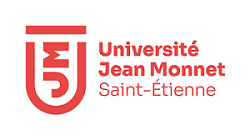Formation Dynamics of Ultrafast Laser-induced Periodic-surface Structure
Résumé
Ultrafast laser radiation has a strong potential for surface structuring on ultimate scales due to a strongly localized character of energy deposition. Depending on laser parameters and material properties, these self-formed structures develop with varying periodicities and amplitudes. We propose here a study concerning the effects of surface plasmon coupling and electron-phonon relaxation on laser-induced periodic surface structure (LIPSS) formation. Plasmonic effects are identified as a key parameter for ultrafast laser energy coupling and explanation of LIPSS orientation with laser polarization. A set of gratings with different periods has been exploited to investigate the correlation between ripples formation under ultrashort laser exposure and surface plasmon generation conditions. For TM irradiation conditions and a well-defined period of grating, ripples formation occurs. Apart from the comprehension effort related to laser excitation mechanisms, the objective is to design user-defined nanostructuration with predictable properties for a wide range of metals by taking advantage of their behavior under nonequilibrium conditions. In this context, we have generated LIPSS on various materials with different electronic configuration in order to investigate the influence of the electron-phonon coupling strength and the effective thermal diffusion length on the specific contrast of LIPSS. Representative metals (transition, noble) with a large range of coupling strengths were exposed to ultrafast laser excitation and the patterning surface was investigated ex-situ by atomic force microscopy and scanning electron microscopy. It appears that the LIPSS contrast is correlated to the constant of electron-phonon coupling determining the initial energy redistribution, and to the amount of material experiencing solid-to-liquid transitions. Time history of ripples formation and growth is discussed in this context of transient phase transition using an hydrodynamic approach.

